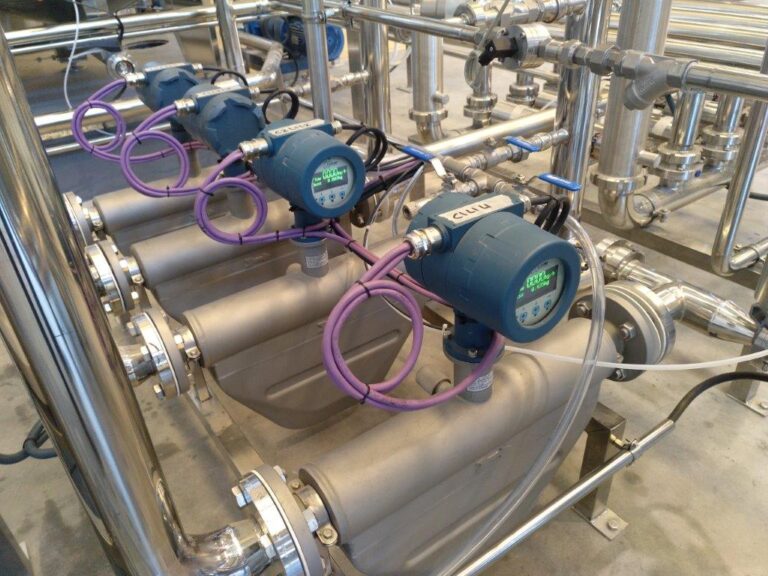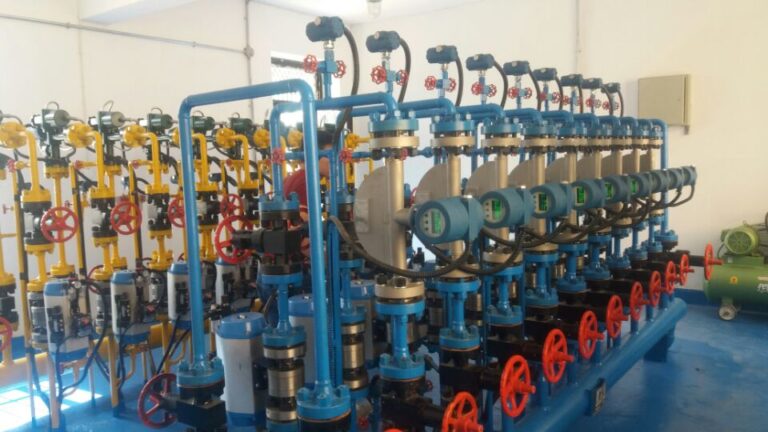Mass flow meters are critical instruments used in various industries to measure the mass flow rate of liquids, gases, and even slurries. These devices are designed to provide accurate and reliable measurements, ensuring optimal operation in manufacturing processes, chemical reactions, and energy management. However, like all measurement devices, mass flow meters are subject to inherent errors. The basic error of a mass flow meter refers to the discrepancy between the measured flow and the actual flow. Understanding how these errors are defined, controlled, and minimized is crucial for ensuring accurate measurements.
1. What is Basic Error in Mass Flow Meters?
The basic error of a mass flow meter is the difference between the value indicated by the meter and the true value of the mass flow rate. This error is typically expressed as a percentage of the measured flow or as a fixed amount depending on the flow range. The basic error usually occurs due to factors such as calibration inaccuracies, environmental conditions, or inherent limitations in the sensor technology.

2. Error Tolerance and Standards
Mass flow meters must meet certain industry standards that define their acceptable error limits. These standards are typically set by organizations such as:
- ISO (International Organization for Standardization): For mass flow meters, ISO 2533 is often referenced. It defines the testing and calibration procedures as well as the tolerances for errors in mass flow measurement.
- OIML (International Organization of Legal Metrology): OIML R49 is a widely recognized recommendation for mass flow meters, especially in legal metrology where accurate measurement is crucial.
Based on these standards, mass flow meters are required to operate within certain limits for basic error, ensuring that the devices are suitable for their intended applications.
3. Key Factors Affecting Error
Several factors contribute to the basic error of mass flow meters. These include:
Flow Range: The basic error is often defined within a specific flow range. Outside of this range (either too high or too low), the error margin can increase. Manufacturers typically specify the error percentage for the flow range where the meter performs optimally.
Environmental Conditions: The conditions under which a mass flow meter operates can significantly impact its accuracy. Factors such as temperature, pressure, and even humidity can alter the flow properties of the fluid being measured. For example, changes in temperature can affect the fluid’s density, leading to deviations in the measured mass flow rate.
Fluid Properties: The composition of the fluid, including its density, viscosity, and chemical makeup, can influence the measurement accuracy. Some flow meters are more sensitive to changes in these properties than others. For instance, Coriolis flow meters are known for their ability to measure mass flow directly, but their performance may still be affected by variations in fluid composition.
Calibration: All mass flow meters need periodic calibration to maintain accuracy. Calibration is the process of adjusting the meter to align with known reference standards. The error in measurement can increase if the meter is not calibrated regularly, or if it has not been calibrated under conditions that mimic the actual operating environment.

4. Common Error Limits in Mass Flow Meters
Mass flow meters are generally designed to meet specific accuracy limits. For most commercial mass flow meters, the typical error is within the range of ±0.5% to ±1% of the measured flow. This means that the error between the measured value and the true value of the mass flow rate should not exceed this percentage under standard operating conditions.
However, error limits can vary based on:
- Meter Type: Different types of mass flow meters exhibit different error characteristics. For example:
- Coriolis Mass Flow Meters: These meters are typically known for their high accuracy and are often specified with error limits of around ±0.1% to ±0.2% in optimal conditions.
- Electromagnetic Flow Meters: These may have error margins that range from ±0.5% to ±1% of the measured value.
- Turbine Flow Meters: These can have a slightly higher error tolerance, often around ±1% to ±2%, depending on the application.
- Flow Regime: The performance of mass flow meters can also vary depending on whether the flow is laminar or turbulent. Laminar flows (which occur at low flow rates) may lead to higher errors in some types of meters.
5. Calibration and Maintenance
Maintaining the accuracy of a mass flow meter requires periodic calibration, especially if environmental conditions or fluid properties change over time. The calibration process involves:
Reference Standards: Using a known mass flow standard to compare and adjust the meter’s reading. These standards are highly precise and are often traceable to national or international measurement institutes.
Environmental Simulation: In some cases, calibration is performed by simulating the operating conditions of the actual system in which the meter will be used. This can include adjusting for temperature, pressure, and fluid viscosity.
Additionally, regular maintenance is crucial to ensure that no drift occurs in the flow meter’s performance. This includes cleaning the meter, inspecting components for wear and tear, and replacing any parts that may degrade over time.

6. Conclusion
The basic error specification of a mass flow meter is essential to understanding its accuracy and reliability in measuring mass flow rates. By adhering to industry standards like ISO 2533 and OIML R49, and by carefully considering factors such as the flow range, environmental conditions, and calibration practices, users can ensure that their mass flow meters provide precise and accurate measurements. Understanding and controlling the error margins in these meters is fundamental to the success of industries where accurate flow measurements are critical, including chemical processing, energy management, and environmental monitoring.
To achieve optimal performance and minimize errors, it is important to choose the right type of mass flow meter for the specific application and ensure proper installation, calibration, and ongoing maintenance.
